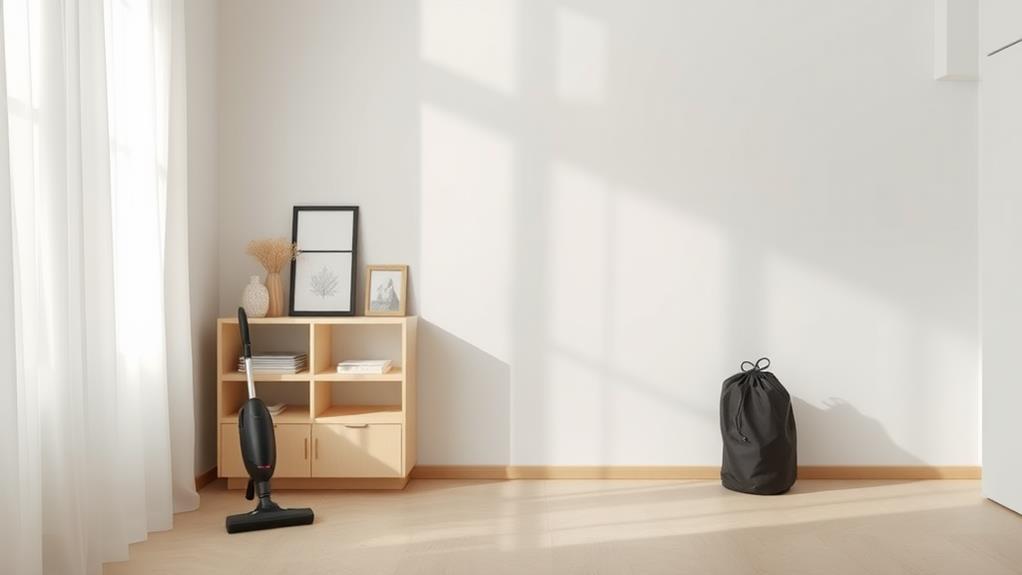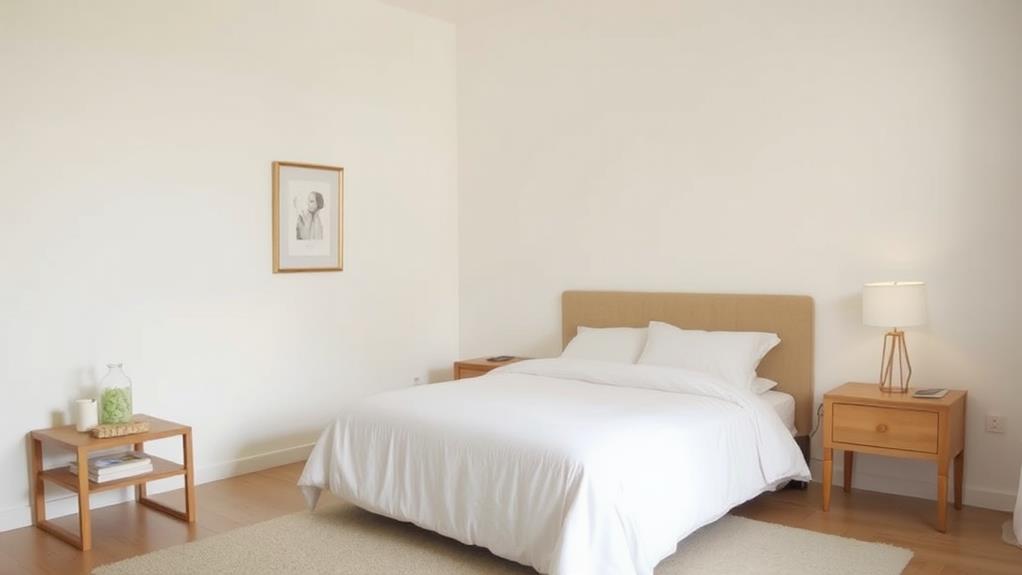To declutter and organize your home, start by adopting a mindset that it's a process and set specific goals for what you want to achieve. Gather supplies, schedule dedicated time, and enlist help if needed. Identify clutter hotspots, like countertops and closets, and sort items into categories. Purge unwanted items, being honest with yourself about what you really need. Organize storage spaces, optimize your closet, kitchen, and bathroom, and maintain your new order with daily tasks and weekly reviews. By following these steps, you'll be on your way to a more peaceful and productive living space, and there's more to explore to make it truly tailored to your needs.
Summary
- Adopt a decluttering mindset by recognizing it's a process, and set specific goals for your desired space.
- Identify clutter areas, including hidden spaces like drawers and cupboards, and schedule dedicated time for decluttering.
- Sort items into categories, purge unwanted ones, and assign a home for each item to ensure everything has a designated place.
- Optimize storage spaces by evaluating solutions, installing dividers, and labeling sections to maintain organization.
- Incorporate daily and weekly tasks, such as tidying up and reviewing schedules, to maintain your organization system.
Prepare for Decluttering Success
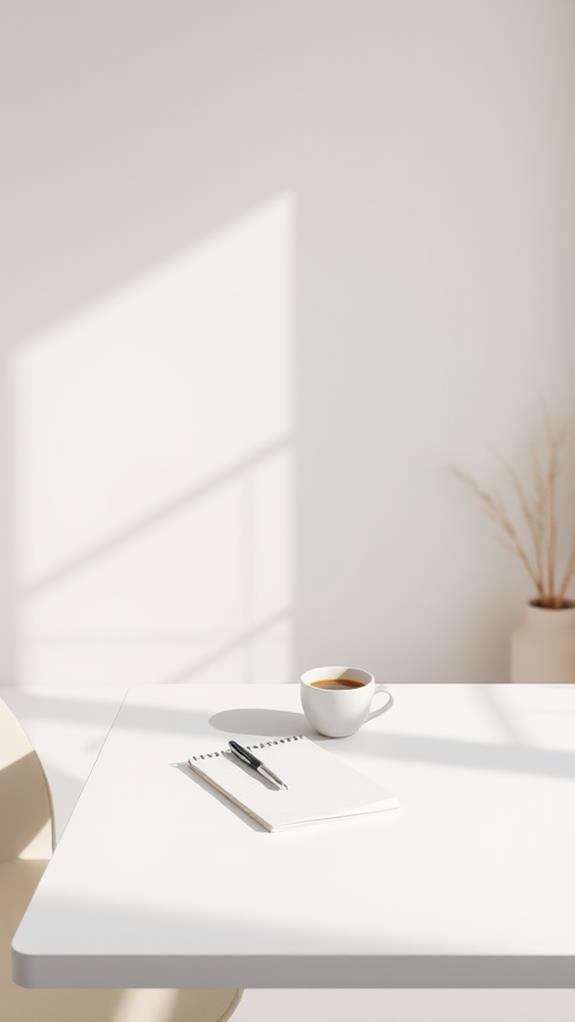
Getting ready to declutter your home can feel intimidating, but taking the time to prepare will set you up for success.
Adopt a decluttering mindset by recognizing that letting go of clutter is a process, and it's okay to take it one step at a time.
Develop a clear vision of how you want your space to look and feel, and set specific goals for what you want to achieve.
Effective preparation strategies include gathering supplies like boxes and trash bags, scheduling dedicated time for decluttering, and enlisting the help of a friend or family member for support.
Identify Clutter Hotspots
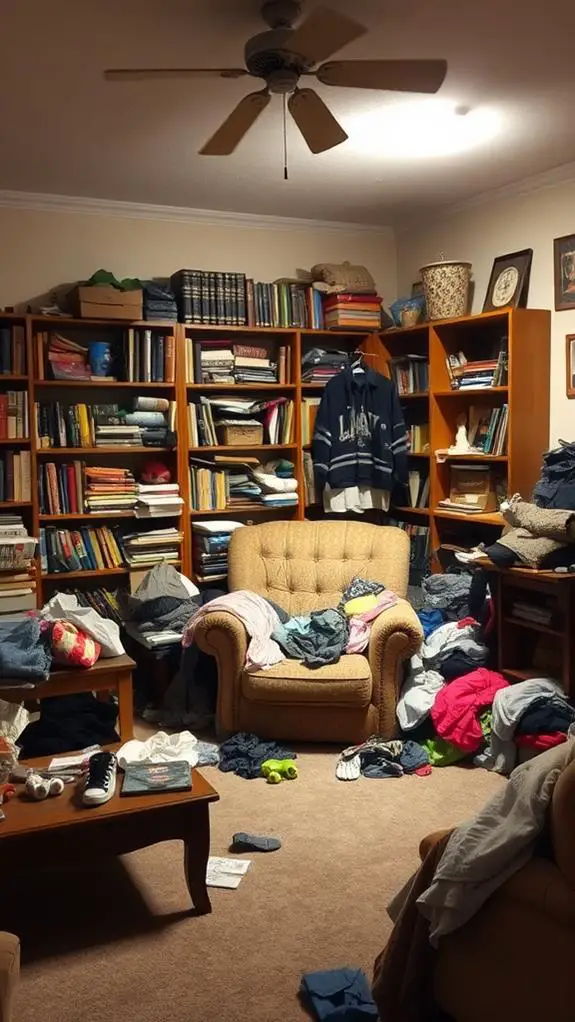
You'll likely find that clutter tends to accumulate in certain areas of your home, such as countertops, closets, and entryways.
These common clutter areas are often the most visible and frustrating, but don't forget to also look for hidden clutter spaces like drawers, cupboards, and shelves.
Common Clutter Areas
Identifying the areas of your home where clutter tends to accumulate is crucial to developing an effective decluttering strategy.
You'll likely find that clutter magnets, such as entryways, countertops, and tables, attract clutter like a magnet. These high-traffic areas are prone to accumulating mail, keys, wallets, and other items that are easily misplaced.
Don't forget to inspect your closet floors, shelves, and drawers, where hidden messes often lurk. Also, take note of areas around major appliances, like the kitchen sink or laundry machines, where clutter tends to congregate.
Hidden Clutter Spaces
Behind the closed doors and beneath the surface of your organized spaces, hidden clutter hotspots often remain unnoticed until they're overflowing.
You'll be surprised at how quickly clutter accumulates in these areas. Check your furniture, like ottomans and coffee tables, which often have hidden shelves or secret compartments that can quickly become cluttered.
Don't forget about the back of closet doors, where hooks and shelves can harbor clutter. Even decorative items, like vases or baskets, can collect dust and clutter.
Take everything out, sort items into categories, and purge what you no longer need or use. Once you've decluttered, organize what's left using storage solutions that fit your needs.
Sort Items Into Categories

You're now ready to sort items into categories, which involves three key steps.
First, you'll purge unwanted items that are no longer needed or useful.
Next, you'll group similar items together, and finally, you'll categorize items by the room in which they'll be used.
Purge the Unwanted Items
Now that you've prepared yourself mentally for the task ahead, it's time to plunge into the nitty-gritty of decluttering: sorting items into categories and deciding what stays and what goes.
Start by quickly categorizing items into three piles: keep, donate/sell, and discard. Be ruthless – if you haven't used it in the past year, it's likely you won't miss it.
For fast decluttering, focus on one area at a time, like your morning decluttering routine. Pick a specific spot, like your dresser or closet, and sort items into your three piles.
Don't overthink it – this is a quick pass to get rid of the obvious clutter. Once you've purged the unwanted items, you can start grouping similar items together and organizing what's left.
Group Similar Items Together
Sort items into categories to create a sense of order and structure in your newly decluttered space. This step helps you visualize how you can optimize your storage and make the most of your available space.
You'll create category clusters by grouping similar items together, such as all cleaning supplies or all kitchen utensils. Break down these clusters into smaller item batches, like all-purpose cleaners or baking utensils.
As you categorize, consider the frequency of use, seasonality, and the items' relationships to each other. This process enables you to see what you have, identify patterns, and make informed decisions about what to keep, donate, or discard.
Categorize by Room Use
As you stand in your decluttered space, you're faced with the task of categorizing the remaining items by room use.
Divide your belongings into categories based on room themes, such as kitchen, living room, or bedroom. This helps you visualize how you'll use each space and guarantees a seamless shift during the organization process.
Implement zone cleaning by assigning a specific area within each room for each category. For instance, designate a zone for cleaning supplies in the kitchen or a reading nook in the living room.
Purge Unwanted Belongings
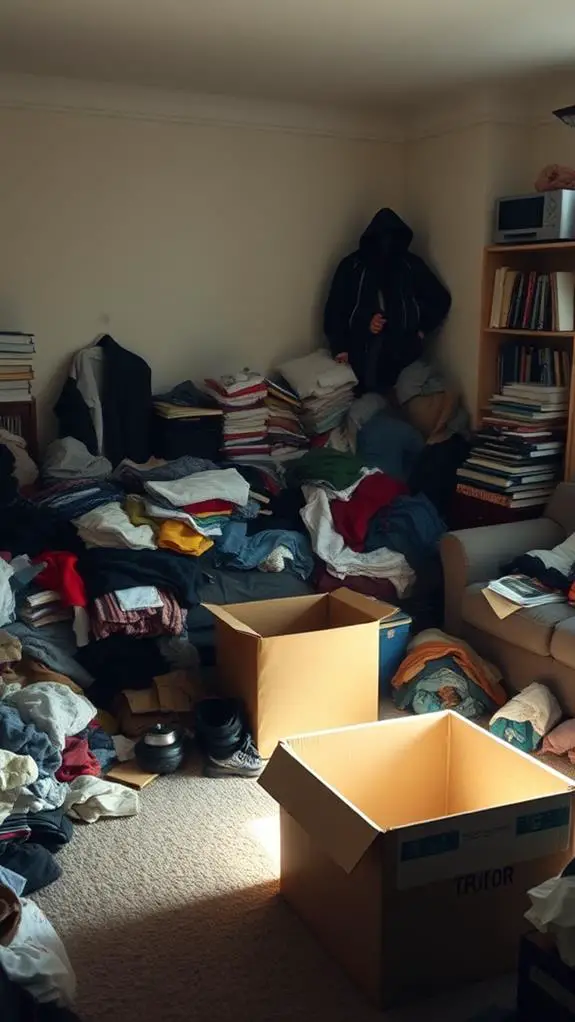
When you're surrounded by clutter, it's easy to feel overwhelmed, but purging unwanted belongings is the crucial first step in taking back control of your space.
Start by gathering boxes and bags for donations, recycling, and trash. Be honest with yourself – if you haven't used something in a year, it's likely you won't miss it.
Let go of items with emotional attachment or sentimental value by taking a photo of them or keeping a small memento. Remember, the memories are what's important, not the physical object. Don't get too attached – the goal is to free up space and energy for what truly matters.
Organize Your Storage Spaces

You've purged your unwanted belongings, and now it's time to tackle the spaces where you'll store what's left.
It's vital to optimize your storage spaces to guarantee everything has a designated place. Start by evaluating your storage solutions, considering the items you need to store and the space available.
Install shelf dividers to separate items and prevent clutter from building up again. Label each section so you can easily find what you need.
Consider investing in stackable bins, baskets, or containers to maximize vertical storage. By organizing your storage spaces, you'll be able to maintain your newly decluttered home and make the most of your available space.
Create a Home for Everything
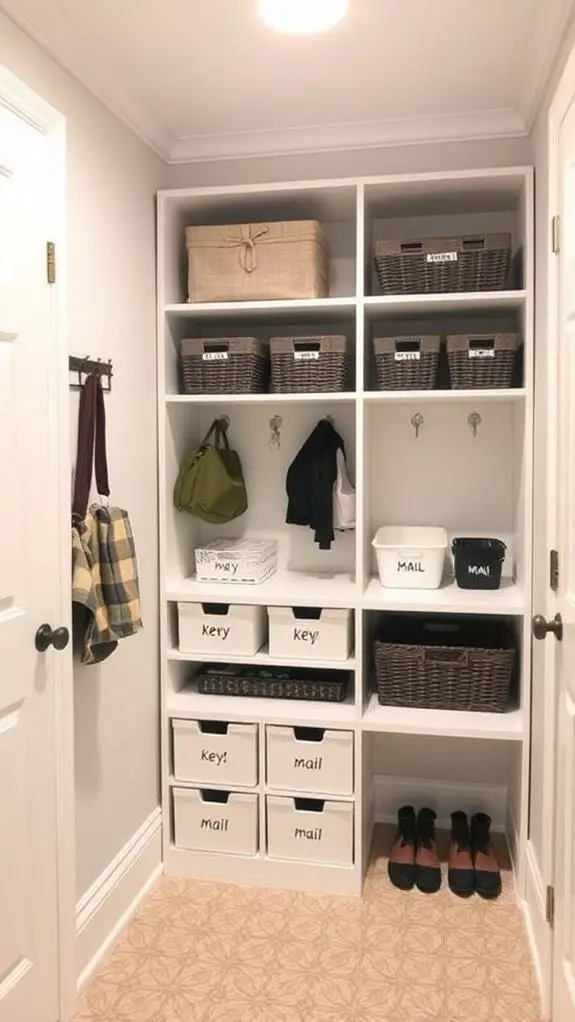
You'll find that clutter tends to accumulate when items don't have a designated spot to reside in.
To combat this, you'll need to designate a specific spot for each item, making it easy to find and put away.
Designate a Spot
Every item in your home should have a designated spot where it belongs, making it easy to find and put away.
This means you'll create designated zones for specific items, like a spot for your keys or a designated area for your workout gear.
By doing so, you'll guarantee that everything has a home, making it easier to maintain a clutter-free space.
Start by identifying clutter-free corners or areas in your home where you can create these zones.
For instance, you can designate a spot near the front door for your keys and wallet, or a corner in your living room for your favorite books.
Assign a Home
With your designated zones identified, it's time to assign a home for each item.
This means creating designated spaces where everything belongs, making it easier to find what you need and maintain your newly organized space.
Start by grouping similar items together, like all cleaning supplies or all kitchen utensils.
Then, assign a specific spot within each zone for each group.
For example, the cleaning supplies zone might've a designated space for all-purpose cleaners, glass cleaners, and disinfectants.
By doing this, you're creating home assignments that make sense and are easy to follow.
This step is vital in maintaining your organization and preventing clutter from building up again.
Set Up a Maintenance Routine
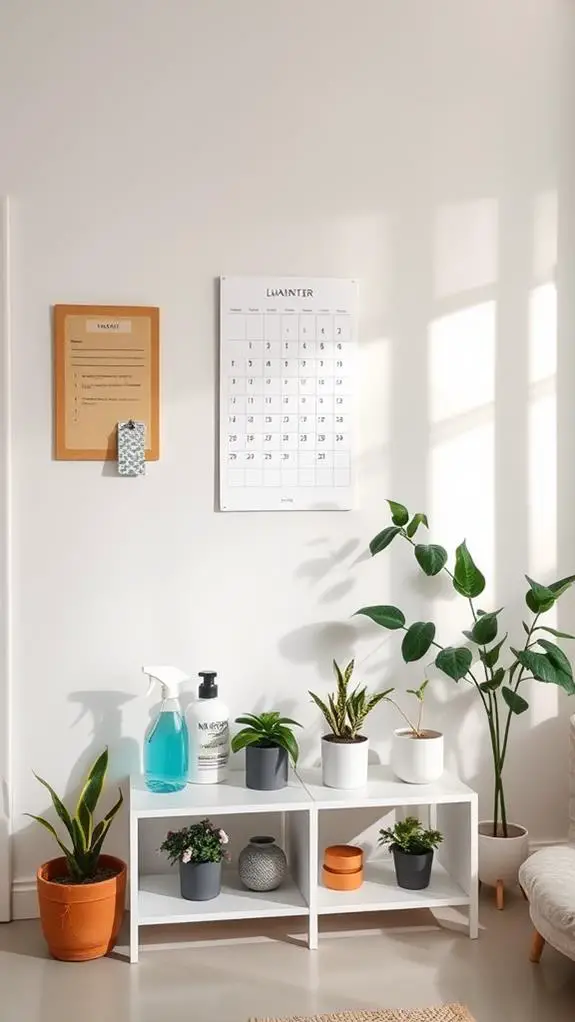
As you've worked to declutter and organize your home, you've likely felt a sense of accomplishment and relief.
Now, it's vital to set up a maintenance routine to guarantee your space remains organized and clutter-free.
Start by incorporating daily tasks, such as tidying up for 10-15 minutes each day, putting away items after use, and addressing messes as they happen.
Additionally, schedule weekly reviews to maintain your organization system.
This can include tasks like restocking supplies, reviewing your schedule, and adjusting your organizational systems as needed.
Manage Paper Clutter Effectively
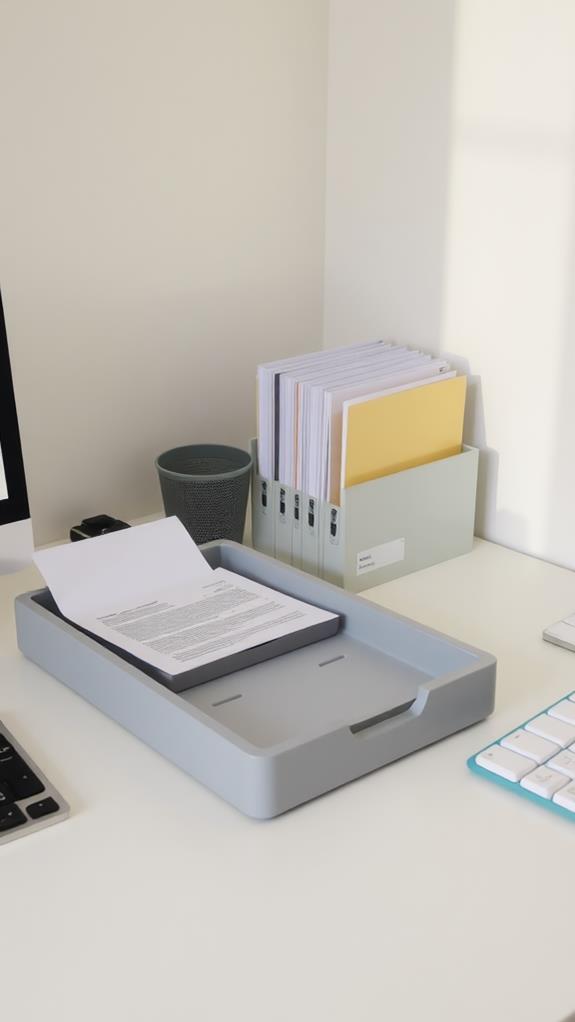
Sorting through piles of paper clutter can be overwhelming, but by implementing a few simple strategies, you'll be able to tame the chaos and keep your paper trail organized.
Start by designating a specific area for handling paperwork, and set aside time each week to sort and file documents.
Consider shifting to a paperless office by digitizing important documents and storing them in digital files. This won't only free up physical storage space but also reduce the risk of lost or damaged papers.
Implement a "touch once" rule, where you deal with each piece of paper as soon as you touch it, either by filing, recycling, or tossing it.
Optimize Your Closet Space
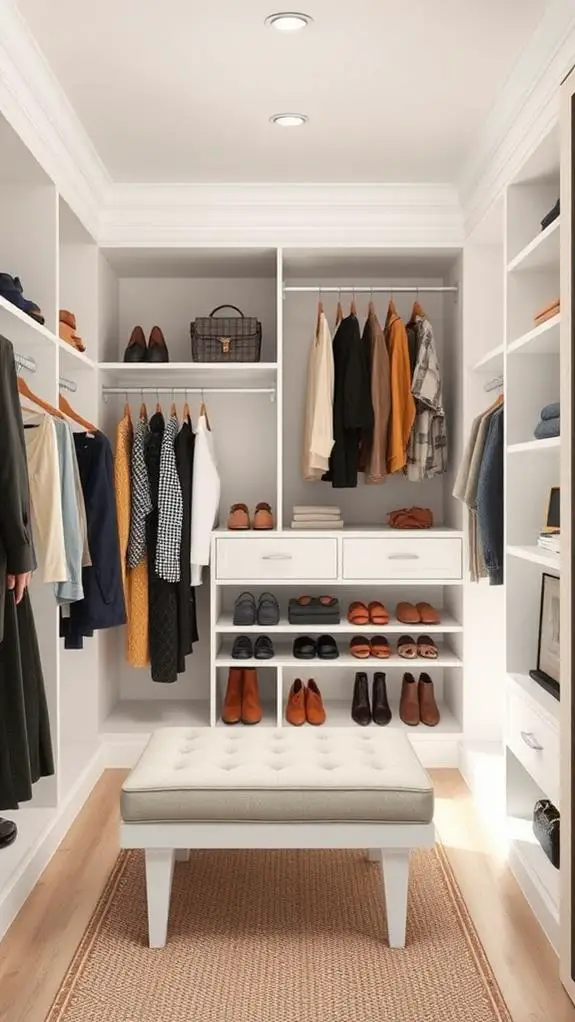
Now that you've got a handle on paper clutter, it's time to tackle another clutter-prone area: your closet.
To optimize your closet space, divide it into zones based on your needs, such as a section for dresses, tops, and pants.
This will help you see what you have and make it easier to find what you need.
Install shelf dividers to separate items and keep them organized.
Consider using double rods or shelves to maximize vertical space.
Store out-of-season clothes in bins or containers and keep them on high shelves.
Hang clothes by type, with the most frequently worn items at eye level.
Streamline Your Kitchen
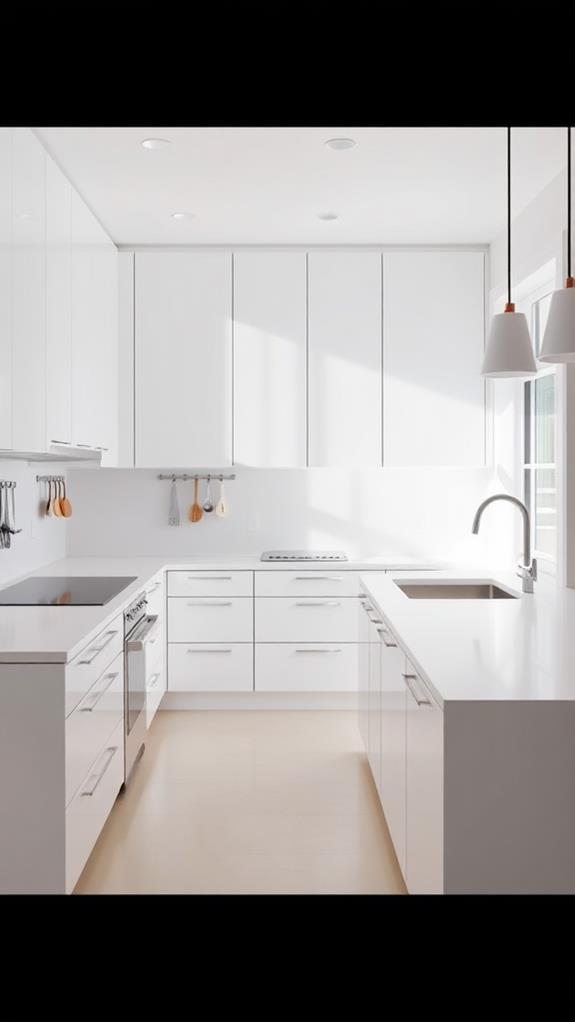
Your kitchen is likely the heart of your home, where meals are prepared and memories are made, but it can quickly become a cluttered and chaotic space.
To streamline your kitchen, start by identifying the essential items you need to keep. Consider investing in smart appliances that can help you cook more efficiently and free up counter space.
Purge any duplicate or broken items, and organize your kitchen essentials into categories, such as baking, cooking, and dining. Assign a home for each item, and make sure everything is easily accessible.
Bring Order to Your Bathroom
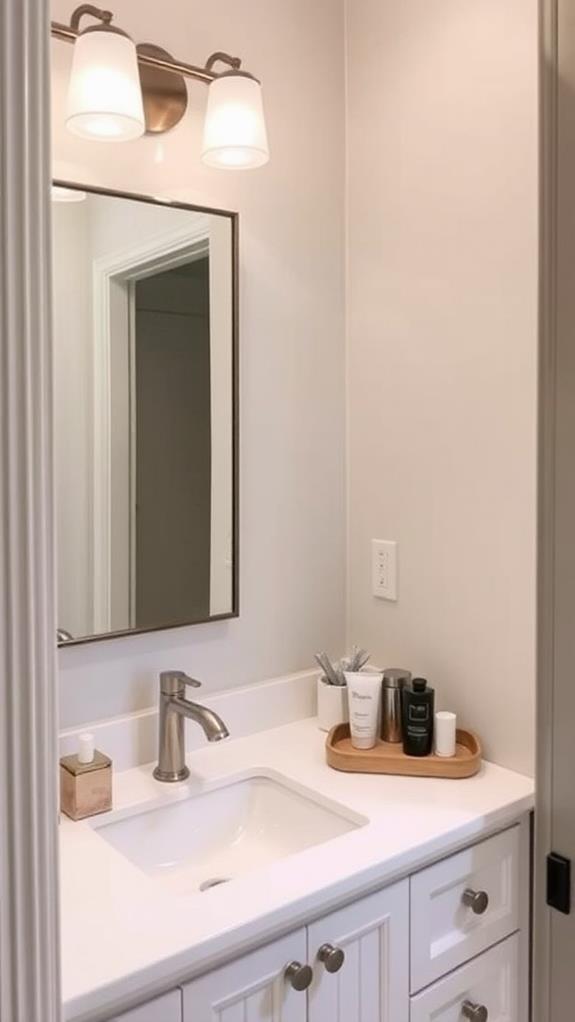
The bathroom, where you start and end each day, can quickly devolve into a cluttered and chaotic space, making your daily routine more stressful than it needs to be.
To bring order to this essential room, start by clearing off bathroom countertops and sorting items into categories. Assign a home for each item, such as a designated spot for toiletries or a basket for towels.
Invest in shower organizers to maximize storage and keep shower floors clear. Consider installing shelves or a cabinet above the sink to store less frequently used items.
Maintain Your Newfound Order

By establishing a routine of regular tidying sessions, you'll guarantee your newly organized bathroom remains clutter-free and functional.
Set aside 10-15 minutes daily to maintain your space, focusing on quick tasks like wiping down surfaces, restocking essentials, and putting away items.
Develop daily habits that promote organization, such as designating a spot for frequently used items or implementing a "one in, one out" policy.
Additionally, schedule seasonal checks to tackle deeper cleaning tasks, like reorganizing storage or scrubbing the shower.
FAQs
How Do I Declutter Sentimental Items Without Feeling Guilty?
You're struggling to let go of sentimental items due to emotional attachment. Create a Memory Box to store a few select keepsakes, and take photos of items you can't keep, allowing you to preserve the memory without the clutter.
Should I Organize by Category or by Room?
When tackling organization, you're faced with a vital decision: category or room-based approach. Consider zone cleaning, where you focus on one area at a time, and task grouping, which helps you batch similar tasks together, to determine the best method for your unique needs.
What's the Best Way to Involve Family Members in Decluttering?
You'll get everyone on board by holding family meetings to discuss goals and assign shared responsibilities, ensuring each member feels invested and accountable for the decluttering process, making it a collaborative, successful effort.
How Often Should I Review and Update My Organized Systems?
You'll maintain peak organization by scheduling regular System Checks, ideally every 3-6 months, to guarantee your systems stay relevant and functional, fostering Habit Formation that keeps you on track and adaptable to changing needs.
Can I Still Be Organized if I'm Not a Minimalist?
You don't have to be a minimalist to be organized; it's about finding a system that works for your personal style and clutter tolerance, allowing you to maintain a space that's functional and comfortable for you.
Conclusion
You've made it! Your home is now decluttered and organized. To keep it that way, set aside time each week to maintain your spaces. Go through each room, putting away items that are out of place and tackling any clutter that's starting to build up again. Stay on top of clutter hotspots, and don't let clutter accumulate. With these habits in place, you'll be able to enjoy your newly organized home for years to come.

